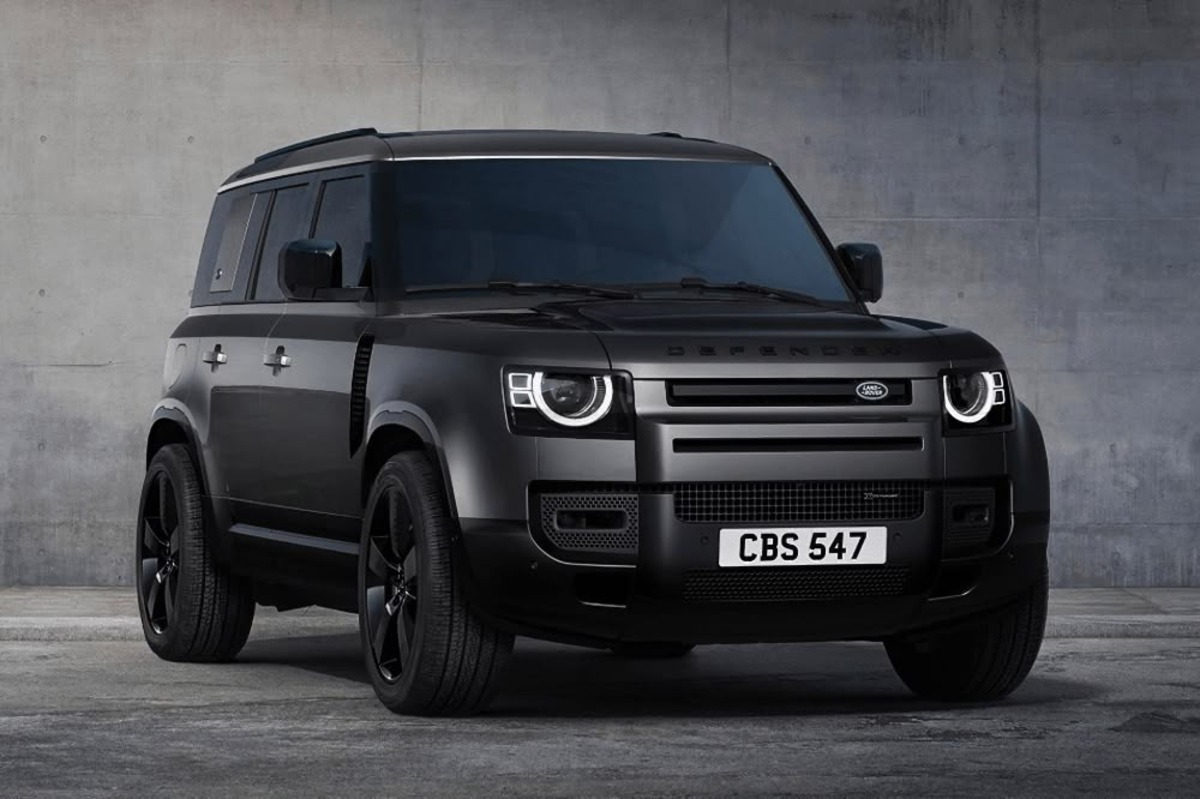The world of SUVs is diverse and ever-expanding, offering everything from rugged off-roaders to luxurious family haulers. However, when it comes to investment and resale, not all SUVs are created equal.
Some models defy the typical depreciation curve and actually increase in value over time, becoming coveted collector’s items or classic vehicles that appreciate significantly.
These SUVs often have a unique blend of rarity, performance, heritage, or cultural significance that boosts demand among enthusiasts and collectors. For buyers looking at long-term value, understanding which SUVs hold or grow in worth is crucial.
Conversely, many SUVs suffer steep depreciation and never fully recover their value after the initial purchase. This depreciation can be caused by factors such as poor reliability, high maintenance costs, oversaturation in the market, or simply a lack of consumer interest in the model.
These vehicles often turn into financial liabilities rather than appreciating assets, leading to disappointing resale prices.
In this article, we will explore two contrasting groups: five SUVs that increase in value over time, standing as smart investments or passion projects, and five SUVs that historically never recover their value, serving as cautionary tales for buyers.
This comprehensive analysis will help readers make more informed decisions about which SUVs might be worth buying for both enjoyment and financial sense.
Also Read: 5 Cars That Break Right After Warranty and 5 That Keep Going Forever
5 SUVs That Increase In Value Over Time
When it comes to vehicles, the typical expectation is that their value depreciates the moment they leave the dealership. However, certain SUVs break this mold by appreciating in value over time.
These models often become highly sought after due to a combination of factors such as limited production, iconic status, performance capabilities, or cultural significance.
Collectors and enthusiasts recognize these traits and are willing to pay premiums, which pushes prices upward rather than downward.
SUVs that appreciate tend to offer something unique beyond everyday practicality. They may be pioneers in the segment, have rugged off-road prowess, or boast a timeless design that remains relevant decades after their release.
For example, some classic SUVs are celebrated for their simplicity and durability, making them attractive for restoration or daily driving even in their later years. Others gain cult followings because of their role in popular culture or motorsport heritage.
Moreover, market trends and shifting consumer preferences toward SUVs have also driven the values of some older models upward, especially as collectors seek out vintage SUVs that combine nostalgia with functionality.
In some cases, limited production runs or special editions increase rarity and exclusivity, which further boosts their collectible value.
Understanding which SUVs hold or increase their value can guide buyers looking for a vehicle that is not just a mode of transportation but also a sound investment or a future classic.
In the following sections, we will explore five SUVs renowned for their ability to increase in value over time, analyzing what makes each one special and why they stand out in a market saturated with vehicles that typically depreciate rapidly.
1. Toyota Land Cruiser (J80 & J100 Series)
The Toyota Land Cruiser has built a legendary reputation over decades for being one of the most capable, durable, and reliable SUVs ever made.
While most vehicles lose value as they age, select generations of the Land Cruiser—particularly the J80 (1990–1997) and J100 (1998–2007) series—have bucked that trend, with resale prices steadily rising and clean examples often fetching more today than they did a decade ago.
There are several key reasons why these models have become appreciating assets. First and foremost, they’re known for exceptional build quality and mechanical robustness.
The J80 series introduced full-time four-wheel drive and solid axles front and rear, giving it unmatched off-road capability while maintaining Toyota’s trademark reliability.
The J100 transitioned to an independent front suspension but retained the same core durability and refinement, often with a V8 under the hood.
Another contributing factor is global demand. In markets such as Australia, the Middle East, and Africa, these Land Cruisers are prized for their ability to traverse harsh terrain without breaking down.
This demand drives prices higher both domestically and abroad. Moreover, as newer Land Cruiser models have grown more complex and less rugged, enthusiasts and adventurers increasingly turn to older models with simpler, more serviceable components.
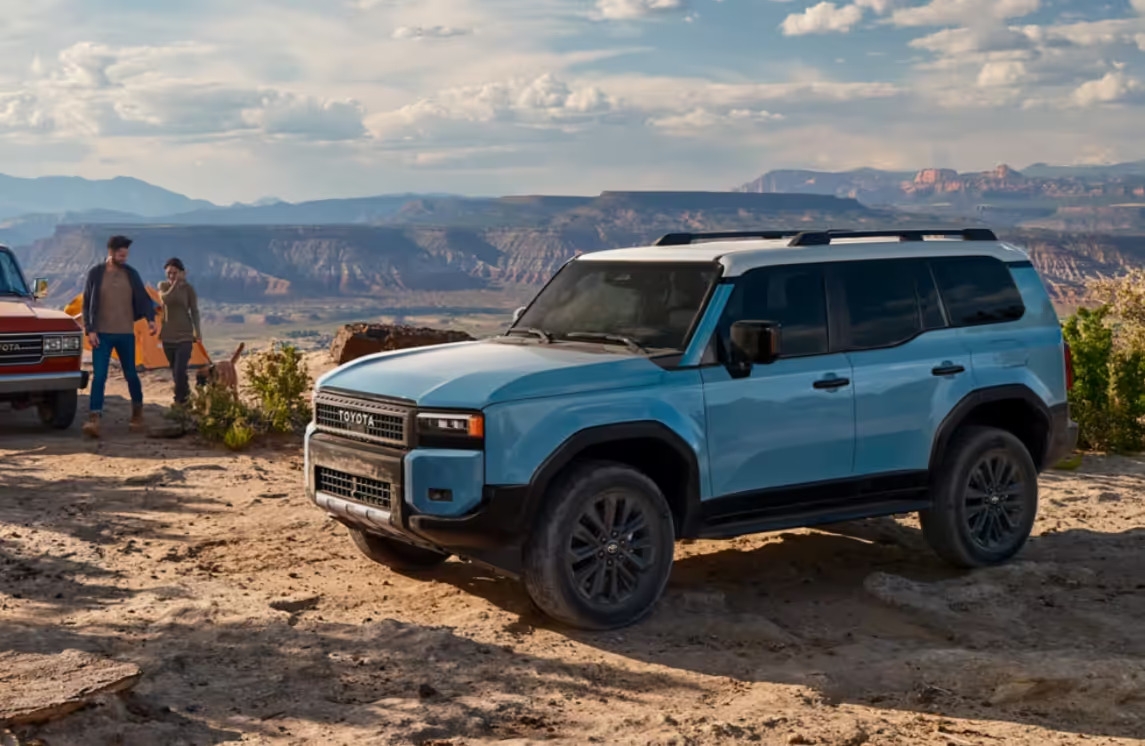
The Land Cruiser also has a strong enthusiast community, which contributes to its rising value. These owners keep their vehicles well-maintained, share knowledge about restoration and modifications, and create a robust second-hand market.
Limited availability—due to Toyota discontinuing the Land Cruiser in the U.S. after 2021—has only further increased demand for the older, proven models.
From safari tours to off-grid expeditions, the Land Cruiser’s iconic status has been cemented across the globe. For buyers looking to own an SUV that not only performs but also appreciates in value, a clean, well-kept J80 or J100 is a wise and rewarding investment.
2. Jeep Wrangler TJ (1997–2006)
The Jeep Wrangler TJ, produced from 1997 to 2006, is one of the rare examples of a vehicle that steadily holds—if not increases—its value, particularly in clean, unmodified form. As a direct successor to the YJ, the TJ marked a return to Jeep’s
roots, blending modern upgrades with the iconic look and off-road prowess that have defined the brand for decades.
Over the past few years, the TJ has quietly become a collector’s favorite, and resale values have climbed significantly—especially for low-mileage or rust-free models.
At the core of its value appreciation is the legendary 4.0-liter inline-six engine, which is renowned for reliability and torque.
Paired with a rugged solid front and rear axle setup, the TJ became the quintessential off-roader, capable of tackling extreme trails while still being manageable as a daily driver. Enthusiasts often point to this generation as the sweet spot between old-school toughness and modern usability.
What really sets the TJ apart—and boosts its long-term value—is its unique blend of simplicity and capability. With a relatively basic mechanical layout, it’s easy and inexpensive to work on, which appeals to DIY mechanics and off-road tinkerers alike.
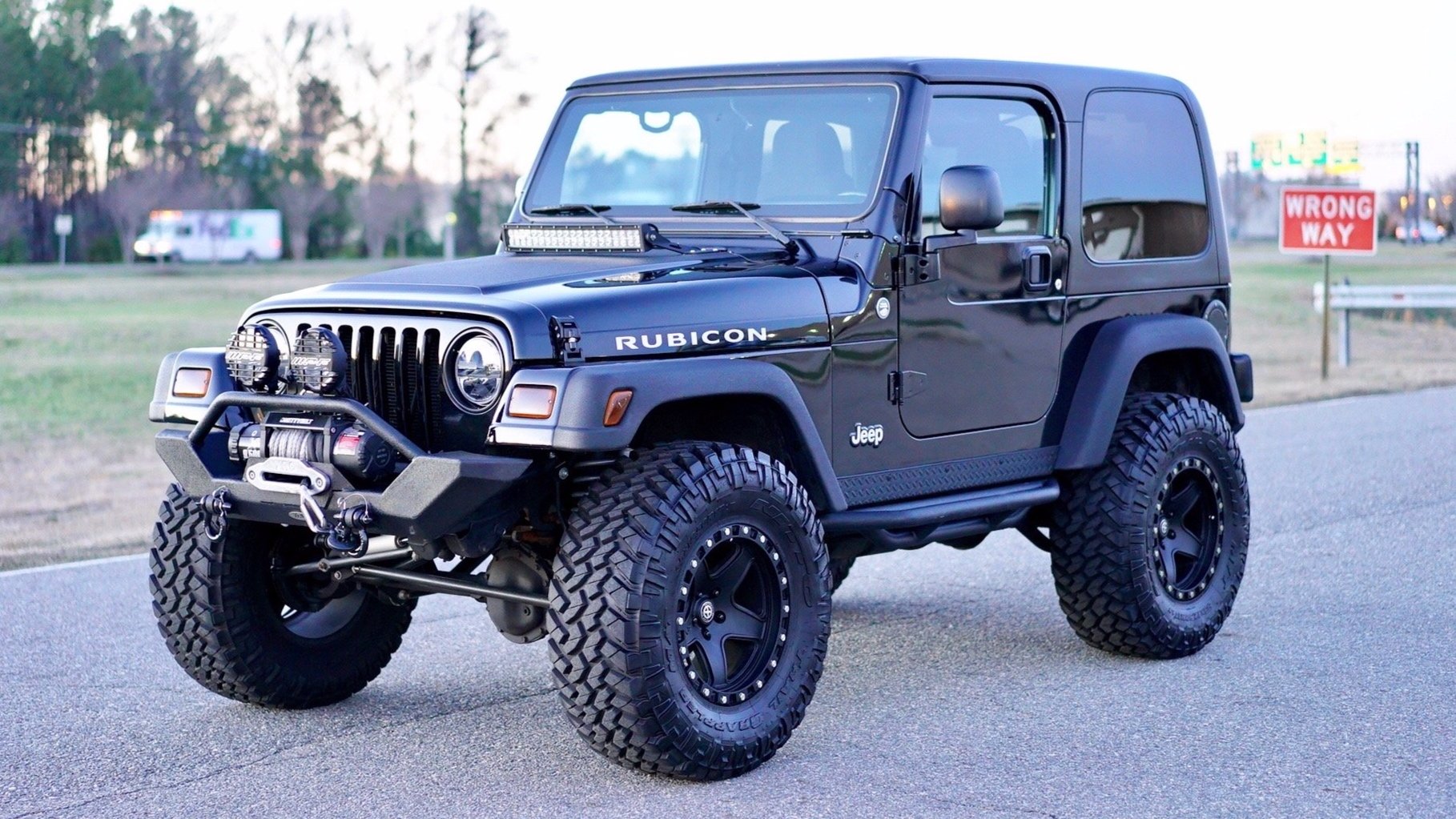
The availability of aftermarket parts and accessories is vast, and the Wrangler’s modular design allows for countless customization options.
Among the TJ variants, the Rubicon trim (introduced in 2003) is the most desirable. It came from the factory with Dana 44 axles, front and rear locking differentials, and a Rock-Trac transfer case, making it one of the most capable stock 4x4s ever sold in the U.S. Today, original Rubicons in excellent condition routinely command high prices on the used market—often nearing or exceeding their original MSRPs.
Additionally, the Wrangler TJ has strong cultural appeal. It has starred in films, adventure documentaries, and countless off-road events. That presence reinforces its image as a rugged, no-nonsense SUV with character and soul.
For anyone seeking an SUV that combines driving enjoyment with value retention—or even appreciation—the Jeep Wrangler TJ is a standout. Its mechanical resilience, off-road heritage, and increasing demand among enthusiasts make it a smart choice for both fun and investment.
3. Land Rover Defender 90/110 (Pre-1997 and 2010–2016 Imports)
Few SUVs carry the legendary status and upward market trend of the classic Land Rover Defender—particularly the Defender 90 and 110 models. Originally designed for agricultural and military use, these boxy, utilitarian vehicles have become cult icons with a loyal global following.
What was once a spartan off-roader is now a cherished collectible, especially in the U.S., where legal import restrictions have turned certain models into rare, appreciating assets.
The U.S. received limited batches of Defenders in the mid-1990s before Land Rover pulled them from the market due to tightening safety regulations.
These factory-imported 1993–1997 North American Specification (NAS) Defenders have become especially valuable, with clean examples fetching six figures at auction.
Internationally, as 25-year import laws allow more models to be brought into the U.S., interest in late-model foreign Defenders (2010–2016) has also surged.
What drives this appreciation? First, timeless design. The Defender’s unmistakable boxy shape and exposed rivets haven’t changed much in decades, giving it a retro charm that’s instantly recognizable.
Second, rugged capability—these SUVs can traverse hostile terrain with ease thanks to solid axles, ladder frames, and manually locking differentials. They’re not fast, but they’re nearly unstoppable off-road.
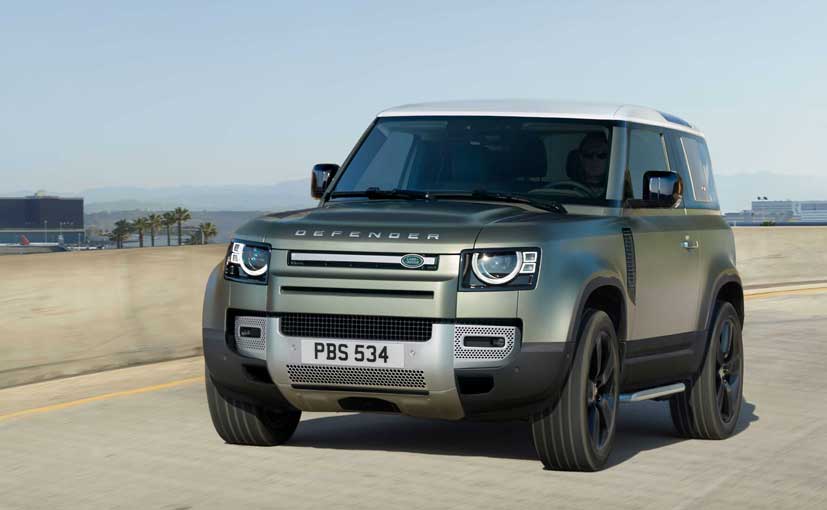
Rarity and simplicity are also major factors. Older Defenders are relatively easy to service and modify. Many were used in extreme environments—Africa, Australia, South America—where durability was paramount.
Surviving clean examples are rare, and enthusiasts are willing to pay a premium for vehicles in good condition or those restored with original-spec parts.
What’s more, a thriving aftermarket industry has emerged around the Defender. Custom restorations from companies like Arkonik and ECD Automotive Design have elevated the Defender to luxury status, with bespoke builds often exceeding $200,000. Even stock versions, especially diesel-powered European imports, are appreciating year over year.
For SUV buyers seeking investment-grade classics, few vehicles are safer bets than the Land Rover Defender. Its combination of rarity, history, mechanical simplicity, and off-road heritage ensures it won’t just hold its value—it will likely keep climbing for years to come.
4. Lexus GX 470 (2003–2009)
The Lexus GX 470, produced from 2003 to 2009, is one of the most underrated SUVs that has recently begun climbing in value. Built on the same platform as the legendary Toyota Land Cruiser Prado (J120), the GX 470 merges Toyota’s bulletproof reliability with Lexus luxury—creating a rugged yet refined SUV that’s become increasingly desirable in used markets.
For many years, the GX 470 was overlooked, often seen as a conservative luxury SUV for suburban families. But as off-road and overland communities have grown in popularity, so has demand for durable body-on-frame SUVs with genuine trail capabilities.
Enter the GX 470—a V8-powered, full-time four-wheel-drive vehicle with a low-range transfer case, impressive suspension articulation, and a stout frame. Enthusiasts now view it as a hidden gem, with resale values reflecting that shift in perception.
Under the hood is a 4.7-liter V8 (2UZ-FE), a motor famed for its longevity and smooth power delivery. This engine, also used in the Toyota Tundra and Land Cruiser, is known to last 300,000+ miles with minimal fuss.
Combined with Lexus’ craftsmanship and build quality, the GX 470 offers an unbeatable mix of refinement and durability. Many used examples, even with 150,000+ miles, command well over $15,000—up from prices just a few years ago.
Another factor driving appreciation is aftermarket support. Lift kits, skid plates, snorkels, and bumpers are widely available, and more owners are modifying their GX 470s into expedition-ready rigs.
Its off-road chops surprise many who assume a Lexus badge means soft-road luxury. In reality, the GX 470 is a Land Cruiser in disguise—with ventilated seats and wood trim.
The market has also shifted due to Toyota’s decision to discontinue the Land Cruiser in the U.S. for several years.
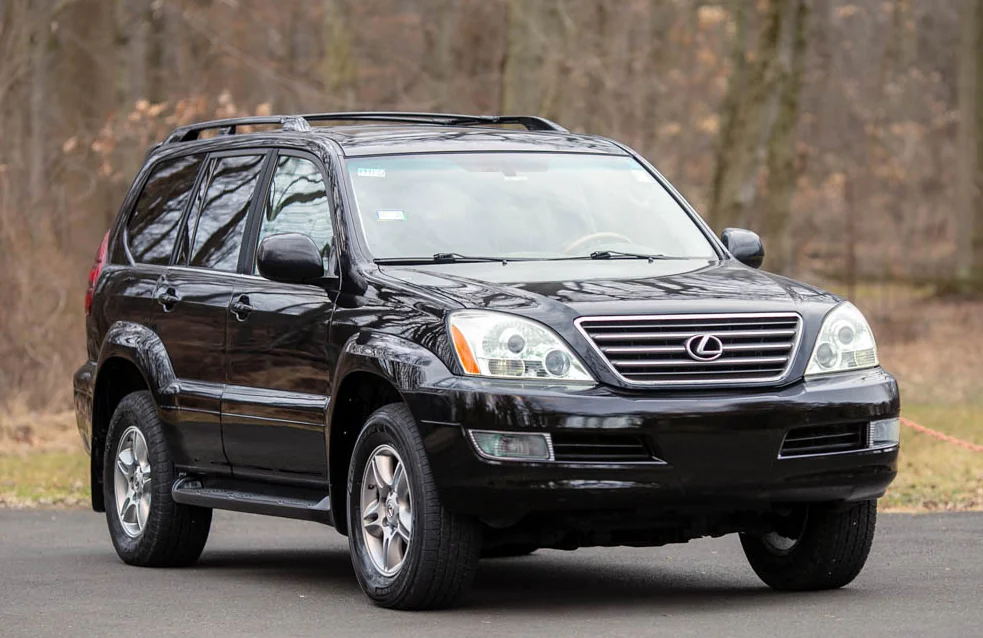
As new body-on-frame SUVs become scarce, older models like the GX 470 have become the next best alternative—and arguably better, thanks to proven reliability and a lower initial cost.
For buyers who want long-term dependability and rising value, the GX 470 is no longer a sleeper—it’s a proven investment. Finding one in stock condition with full service records is getting harder, and prices are expected to continue rising.
5. Toyota FJ Cruiser (2007–2014)
The Toyota FJ Cruiser, built from 2007 to 2014, is one of the few modern SUVs that has defied conventional depreciation trends.
Initially greeted with mixed reviews for its polarizing retro design, the FJ Cruiser has matured into a collectible with strong resale value—so much so that well-kept used examples are now selling for more than their original sticker prices in certain trims and color combinations.
Inspired by the classic Toyota FJ40 Land Cruiser, the FJ Cruiser captured the spirit of rugged adventure while integrating modern Toyota engineering. It was based on the same platform as the Land Cruiser Prado and 4Runner, giving it serious off-road credibility.
A 4.0-liter V6 engine (1GR-FE) paired with either a 5-speed automatic or a 6-speed manual (in 4WD models) gave the FJ the strength to conquer remote trails and endure thousands of miles without mechanical drama.
What sets the FJ Cruiser apart in terms of value retention is its limited production run and instant cult status.
Toyota ceased production for North America in 2014, and no direct replacement was offered—making the FJ one of the last truly off-road-focused SUVs in a growing sea of car-based crossovers.
Special editions like the Trail Teams models, especially the 2014 Ultimate Edition in Heritage Blue, have become highly sought-after collector items.
Buyers are drawn not only to the FJ’s capabilities but also to its quirky charm. From the suicide-style rear doors to the color-matched interior inserts and dashboard-mounted compass/inclinometer, the FJ exudes personality in a market full of homogenized designs.
Its thick body panels and high ground clearance also make it incredibly durable, with many examples crossing the 200,000-mile mark without significant repairs.

Another major factor is Toyota’s legendary reputation for reliability. The FJ shares many components with the Tacoma and 4Runner, giving owners access to a vast aftermarket and affordable maintenance.
Clean, low-mileage examples are rare and steadily appreciating, with some 2014 models reaching $40,000–$50,000 depending on condition and mileage.
In a market where most SUVs lose half their value in a few years, the Toyota FJ Cruiser is a standout. For those who purchased one new and held onto it, the payoff has been both emotional and financial.
5 SUVs That Never Recover
While some SUVs quietly gain traction on the resale market and surprise owners with unexpected appreciation, others experience a different fate entirely—they lose value quickly and never bounce back.
These are the SUVs that, for a variety of reasons, continue to depreciate until they settle at the bottom of the used market and stay there.
Whether due to poor reliability, high maintenance costs, dated designs, or lackluster performance, these models fail to spark long-term demand, no matter how competitively priced they become.
The depreciation curve for these vehicles is often steeper than normal, and unlike vehicles that stabilize and eventually trend upward, these SUVs hit a plateau and remain undesirable to many buyers.
It doesn’t matter if they’re loaded with features, were once expensive, or come from name-brand automakers—the combination of baggage and buyer hesitation makes them tough to flip, hard to finance, and nearly impossible to justify as a long-term investment.
In this section, we’ll highlight five specific SUVs that exemplify this trend. These vehicles are not necessarily awful in every regard, but they have characteristics that turn off secondhand buyers: complicated repair histories, disappointing performance, or simply being eclipsed by better options in their class.
Some were overpriced when new, others suffered from awkward styling or timing in the market, and a few carry long-standing reputations that tank their used value. We’ll explore why these SUVs fell flat in the resale world and what exactly keeps them from ever bouncing back.
If you’re car shopping with future value in mind or thinking of investing in a used SUV, these are models you may want to avoid—unless you’re buying purely for utility and don’t care what you’ll get back later.
Let’s take a closer look at five SUVs that just don’t recover once they drop in value.
1. Jeep Compass (2007–2017)
The first-generation Jeep Compass, spanning model years 2007 through 2017, is a case study in how brand reputation alone isn’t enough to salvage resale value.
While the Jeep name typically conjures images of rugged trail-dominating vehicles like the Wrangler or Grand Cherokee, the Compass entered the market with a much different identity—and one that ultimately hurt its long-term desirability.
Originally introduced as a compact crossover SUV targeting urban drivers rather than off-roaders, the Compass shared its underpinnings with the Dodge Caliber—a car not known for refinement or longevity.
This platform choice resulted in a vehicle that lacked the hallmark capability Jeep is known for, which alienated core Jeep enthusiasts and left mainstream buyers unimpressed.
Critics were quick to point out its mediocre build quality, uninspiring performance, and lackluster interior materials.
Early models were powered by a 2.0L or 2.4L inline-four engine mated to a CVT (continuously variable transmission), which was notorious for reliability issues and sluggish response.
Even models equipped with Jeep’s “Freedom Drive” all-wheel drive system didn’t come close to the brand’s trail-rated standards.
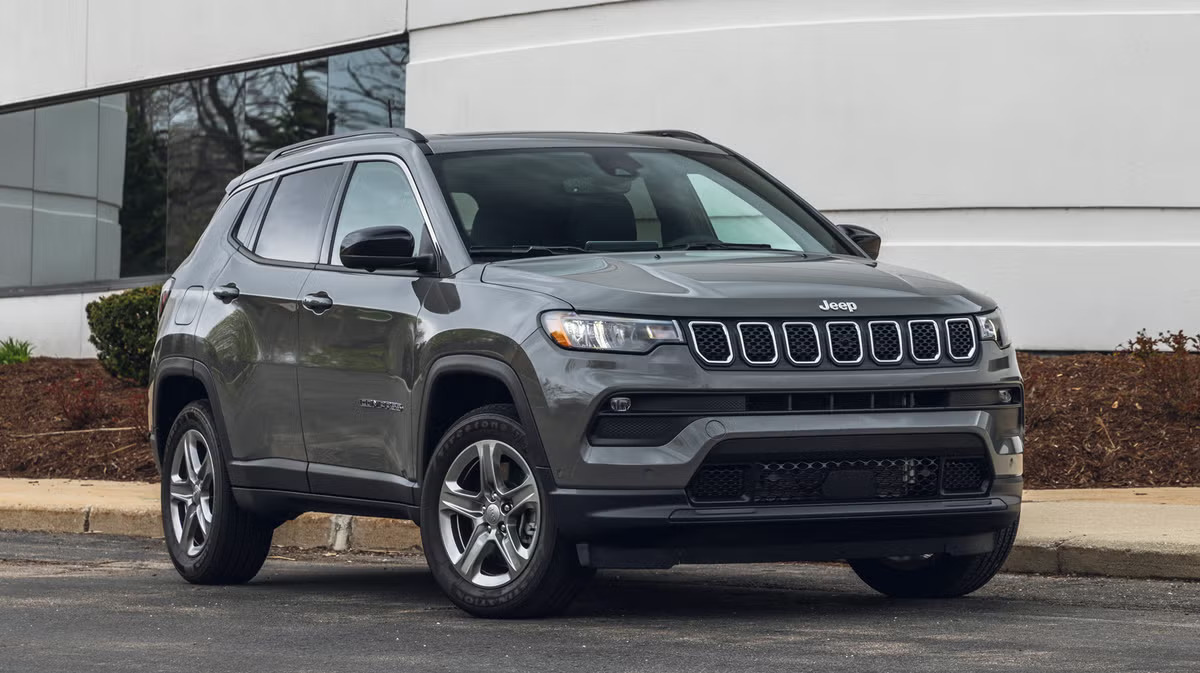
As the years went on, the Compass underwent several facelifts and interior improvements, but the stigma of its poor launch and low-end driving experience persisted.
Resale values never recovered. In the used market today, early Compass models can often be found for less than $5,000—even with relatively low mileage.
Compared to other compact SUVs from Honda, Toyota, or Subaru in the same era, the Compass retains significantly less value over time.
Another long-term detriment is the high cost of repairs relative to its perceived quality. Owners often report issues with electrical systems, suspension components, and the CVT transmission.
These problems can push repair bills higher than what the vehicle is worth—making the Compass a risky proposition for budget-minded used buyers.
Although the second-generation Compass (from 2017 onward) has addressed many of these concerns with better styling and refinement, the damage done by the first-gen model lingers in used market perception.
When shoppers see a Jeep Compass for sale, the low price may tempt them—but the vehicle’s dismal resale performance and reliability woes keep it firmly on the “never recover” list.
2. Mitsubishi Outlander (2010–2018)
The Mitsubishi Outlander from the 2010 to 2018 model years represents a prime example of a vehicle that checks many functional boxes on paper but fails to hold its value due to poor brand perception, dated technology, and lack of market excitement.
Even when offered with seven-passenger seating and optional all-wheel drive, the Outlander struggled to make a lasting impact in the highly competitive compact-to-midsize SUV segment.
During this era, the Outlander came with a choice of engines: a 2.4L four-cylinder for efficiency or a 3.0L V6 for added performance.
While the V6 offered more capability, it came paired with a six-speed automatic that never quite delivered the responsiveness buyers expected. Most four-cylinder trims were saddled with a CVT that, although not the worst in the industry, contributed to a sluggish and droning driving experience.
The problem wasn’t just the powertrain. The interior design and build quality lagged far behind rivals. The dashboard materials felt cheap, the infotainment interface was clunky even by early-2010s standards, and the seating comfort was forgettable.
Many buyers felt they were getting a budget vehicle—and the market has responded accordingly.
On the resale front, depreciation has been unforgiving. Even newer used models from this generation can be found under $10,000, despite low mileage and relatively recent build dates.
Reliability has also been a concern, with owners citing electrical gremlins, faulty suspension components, and premature transmission wear.
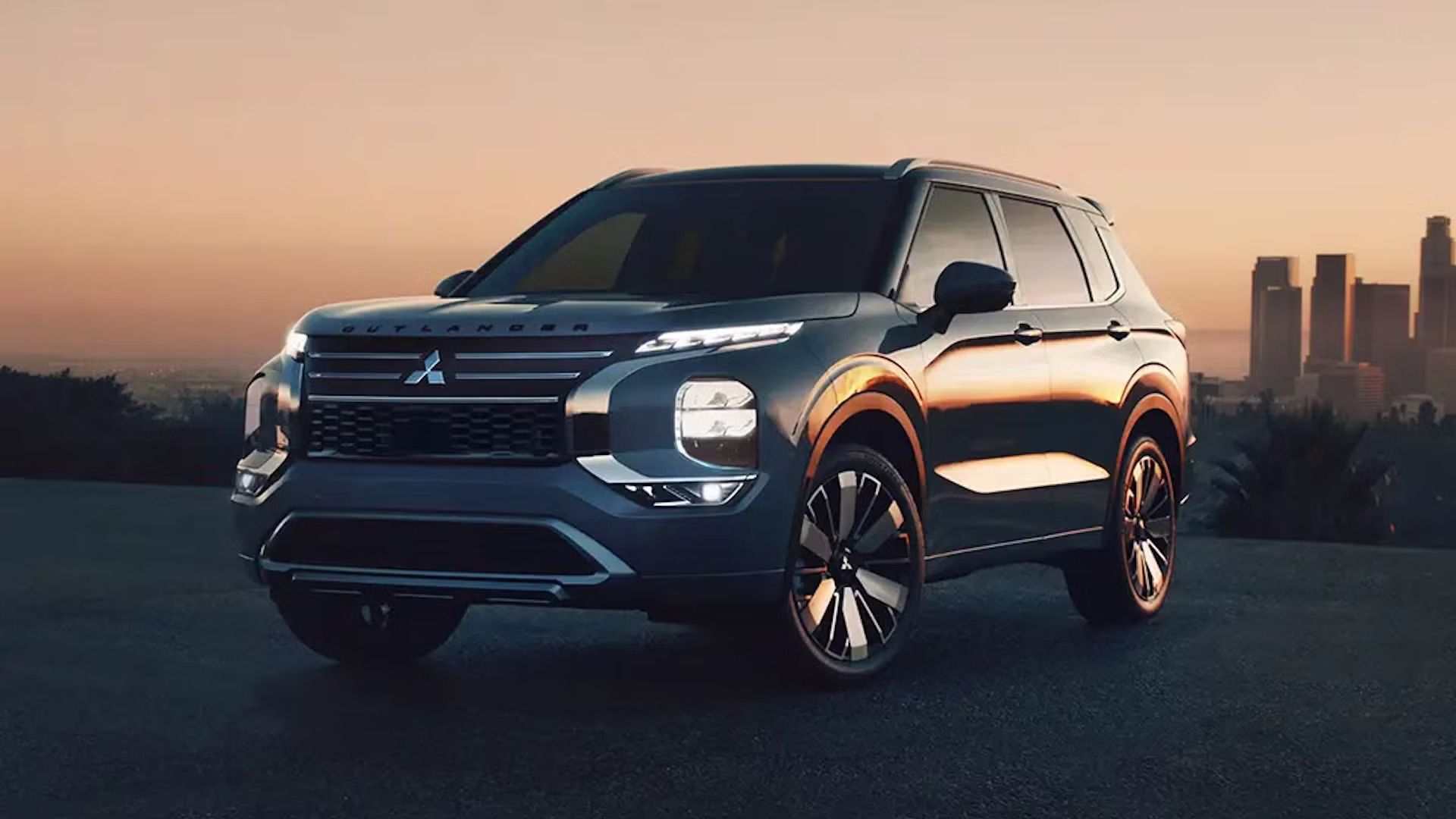
And while Mitsubishi did offer generous warranties (including a 10-year/100,000-mile powertrain warranty), that wasn’t enough to reassure resale buyers—especially since the brand’s U.S. dealership footprint remains small and inconsistent. Buyers fear long-term parts availability and limited service options, which drives demand down even further.
In addition, Mitsubishi as a brand has struggled to gain consumer trust in North America. While the company has strong international roots and a history of engineering prowess, its U.S. lineup has been thin and slow to evolve.
This lack of confidence has a direct impact on used vehicle values, with the Outlander suffering from brand drag more than most.
In the end, the 2010–2018 Mitsubishi Outlander offers basic transportation and occasional seven-seat versatility but is a poor choice for those hoping to recover resale value. It’s the kind of SUV that depreciates early and never gets a second wind.
3. Chevrolet Captiva Sport (2012–2015)
The Chevrolet Captiva Sport, sold in the U.S. between 2012 and 2015 primarily as a fleet vehicle, is one of those SUVs that started with a narrow market focus and never managed to build broader appeal.
Originally designed for international markets under the GM umbrella and based on the Opel Antara, the Captiva Sport was never meant to compete head-on with popular compact crossovers like the Honda CR-V or Ford Escape in the retail arena. That in itself set the stage for its poor resale performance.
The Captiva Sport was offered almost exclusively as a rental or fleet vehicle in North America, with few units making their way to the hands of private consumers as new purchases.
As a result, the used market became quickly saturated with ex-rental examples—often with high mileage, hard usage history, and sparse maintenance documentation.
Buyers tend to avoid these types of vehicles due to their uncertain reliability and higher likelihood of mechanical wear.
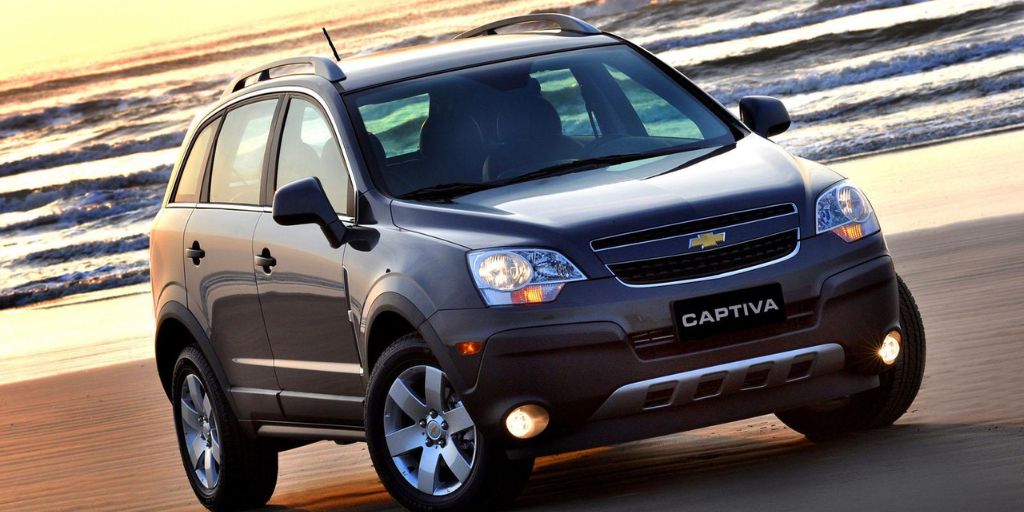
Performance-wise, the Captiva Sport wasn’t particularly competitive. It came with either a 2.4L inline-four engine or a 3.0L V6, both mated to a six-speed automatic transmission. Neither powertrain was lauded for refinement or fuel economy.
The driving experience was average at best, with numb steering, sluggish acceleration, and a harsh ride on less-than-perfect pavement. Interior quality was similarly underwhelming—plenty of hard plastics, limited technology, and ergonomics that felt a generation behind.
On top of that, the Captiva Sport suffered from known issues, including transmission failures, faulty throttle body sensors, and frequent electronic malfunctions. The cost of repairs can easily eclipse the vehicle’s value, especially as it ages.
It’s also worth noting that because it was essentially a badge-engineered product without much marketing or brand identity in the U.S., many buyers are unaware the vehicle even exists—which hurts demand further.
From a resale perspective, the Captiva Sport is nearly invisible. You’ll often find it priced lower than any other compact SUV in similar condition, but even at bargain rates, it moves slowly on the used market.
Its lack of name recognition, rental history baggage, and outdated design make it an SUV that loses value rapidly—and never recovers.
If you’re looking to get even a modest return on investment, the Captiva Sport should be avoided.
4. Dodge Journey (2009–2020)
The Dodge Journey, produced from 2009 through 2020 with minimal updates, is one of the clearest examples of an SUV that fails to retain value and never regains lost ground.
Marketed as a budget-friendly midsize crossover with optional third-row seating, the Journey initially attracted buyers with its low starting price and accessible features. However, this affordability came at the expense of long-term value, build quality, and innovation.
From the very beginning, the Journey felt behind the curve. Built on a platform shared with the Dodge Avenger and Chrysler Sebring—both of which struggled with reliability and consumer perception—the Journey inherited lackluster dynamics and outdated engineering.
Its base engine, a 2.4L four-cylinder, was widely criticized for being underpowered and noisy, especially when paired with a clunky four-speed automatic transmission.
Higher trims did offer a 3.6L V6 with better output and a six-speed automatic, but even that didn’t make the vehicle particularly enjoyable to drive.
The interior was perhaps the biggest letdown. While it technically offered three rows, the third row was cramped and difficult to access.
Materials were budget-grade, and even when Dodge updated the infotainment system mid-cycle, the cabin never felt current or competitive with rivals from Honda, Toyota, or even Hyundai.
The vehicle’s age showed particularly badly in later years, with 2018–2020 models still relying on outdated safety tech and missing many modern driver assistance features.
Resale values reflect this stagnation. The Journey depreciates quickly and steeply. A five-year-old model can be found for well under $10,000—even in good condition.
Buyers know that while the upfront cost is low, ownership costs can mount due to frequent issues with the brakes, electrical systems, and HVAC components.
And because the vehicle lingered on the market long after its peers had advanced in refinement and safety, its reputation for being “cheap but dated” stuck hard.

The final nail in the coffin is market demand. While budget-minded shoppers may consider a used Journey, the vehicle often gets passed over in favor of more reliable, better-equipped alternatives. Despite Dodge’s efforts to keep it afloat, the Journey became a textbook case of brand neglect and outdated design.
In short, the Dodge Journey may have been inexpensive to buy, but in resale terms, it’s one of the worst SUV bets you can make.
5. Ford EcoSport (2018–Present)
The Ford EcoSport, introduced to the U.S. market in 2018 as a subcompact SUV, was Ford’s attempt to capture buyers interested in small, urban-friendly crossovers.
While the EcoSport offered practicality, a high seating position, and compact dimensions ideal for city driving, it quickly became apparent that it would struggle to hold its value over time.
One major factor contributing to the EcoSport’s poor resale performance is its underwhelming powertrain and driving dynamics.
The base 1.0-liter EcoBoost three-cylinder turbocharged engine, while efficient, often feels strained and lacks the responsiveness buyers expect.
The optional 2.0-liter four-cylinder engine offers more power but at a noticeable fuel economy penalty. Additionally, the six-speed automatic transmission can feel sluggish and hesitant, dampening driver confidence.
The interior, although functional, feels cramped compared to rivals like the Honda HR-V or Mazda CX-3. Materials are mostly hard plastics with limited soft-touch areas, and the infotainment system, while user-friendly, lacks the polish found in competitors. Rear passenger and cargo space also suffer due to the compact footprint.
Reliability is another concern. Early EcoSport models have been reported to suffer from transmission troubles, engine stalling, and various electrical glitches.
These issues not only cause frustration for owners but also impact the vehicle’s reputation in the resale market. Given the relatively recent U.S. introduction, many buyers remain cautious about investing in a subcompact SUV with limited proven track record.
Moreover, Ford’s marketing efforts for the EcoSport have been minimal compared to other models in their lineup, resulting in low consumer awareness and demand.
Coupled with an increasingly crowded subcompact SUV segment featuring better-established rivals, the EcoSport faces an uphill battle in maintaining value.
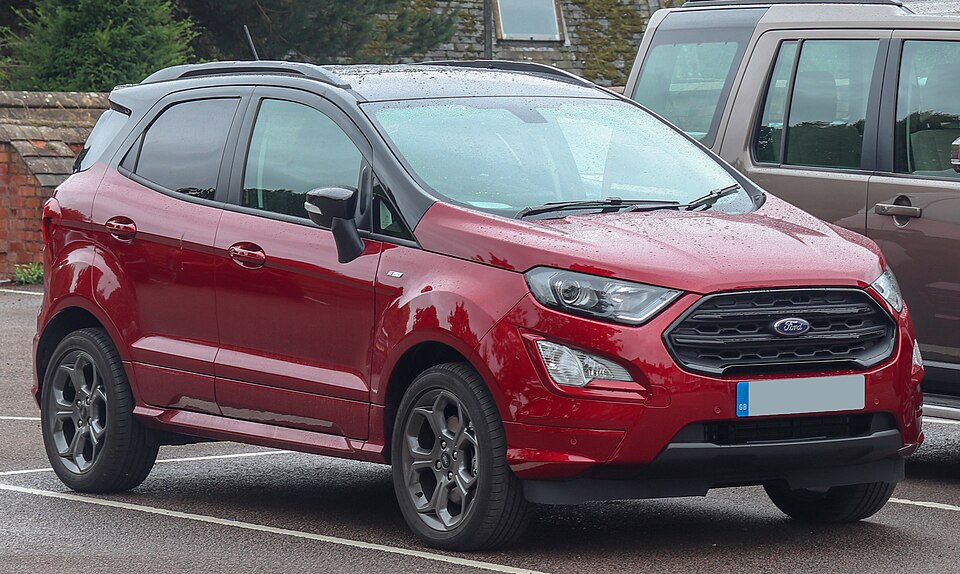
The combination of lackluster performance, cramped interior, spotty reliability, and low demand ensures the Ford EcoSport depreciates rapidly and rarely recovers lost value. It’s often priced attractively in the used market, but the low resale value reflects genuine concerns rather than a bargain.
For buyers focused on long-term value retention, the EcoSport is a poor choice—another SUV that loses significant value and simply never bounces back.
When it comes to SUVs, the landscape of value retention is a complex mix of brand perception, build quality, desirability, and market trends.
Our exploration into SUVs that increase in value over time versus those that never recover reveals clear patterns that every buyer and investor should understand.
SUVs that appreciate or maintain strong resale values—like the Toyota Land Cruiser, Jeep Wrangler, and Lexus GX—combine rugged reliability, iconic design, and a dedicated enthusiast following.
These vehicles often benefit from timeless styling, proven mechanical components, and strong brand loyalty. Their limited production runs or unique capabilities also add to their allure, creating a scarcity factor that drives up prices in the used market.
In many cases, these SUVs become collectibles or status symbols, meaning owners not only avoid depreciation but can sometimes turn a profit by flipping well-maintained examples.
Conversely, SUVs such as the Mitsubishi Outlander, Dodge Journey, and Ford EcoSport demonstrate how failing to innovate, poor reliability, and lack of market demand can lead to steep depreciation and stagnant resale values.
Vehicles that target budget-conscious buyers without delivering competitive driving dynamics, modern features, or strong build quality struggle to command attention in the used market.
Furthermore, those associated with rental fleets or plagued by mechanical issues face additional hurdles in retaining value.
This dichotomy highlights an important lesson for buyers: purchasing an SUV isn’t just about upfront cost or styling; it’s also a financial decision that should factor in long-term ownership costs and resale potential.
While affordable SUVs might appeal initially, their poor value retention often translates into greater total cost of ownership. On the other hand, investing in an SUV with a proven track record and passionate following can pay dividends down the line.
In sum, understanding which SUVs tend to increase in value versus those that don’t is key to making informed purchasing decisions.
Whether you’re an enthusiast, a practical buyer, or a savvy investor, paying attention to these trends can help you avoid costly mistakes and maximize your vehicle’s worth over time.
Also Read: 5 Cars That Break Right After Warranty and 5 That Keep Going Forever

